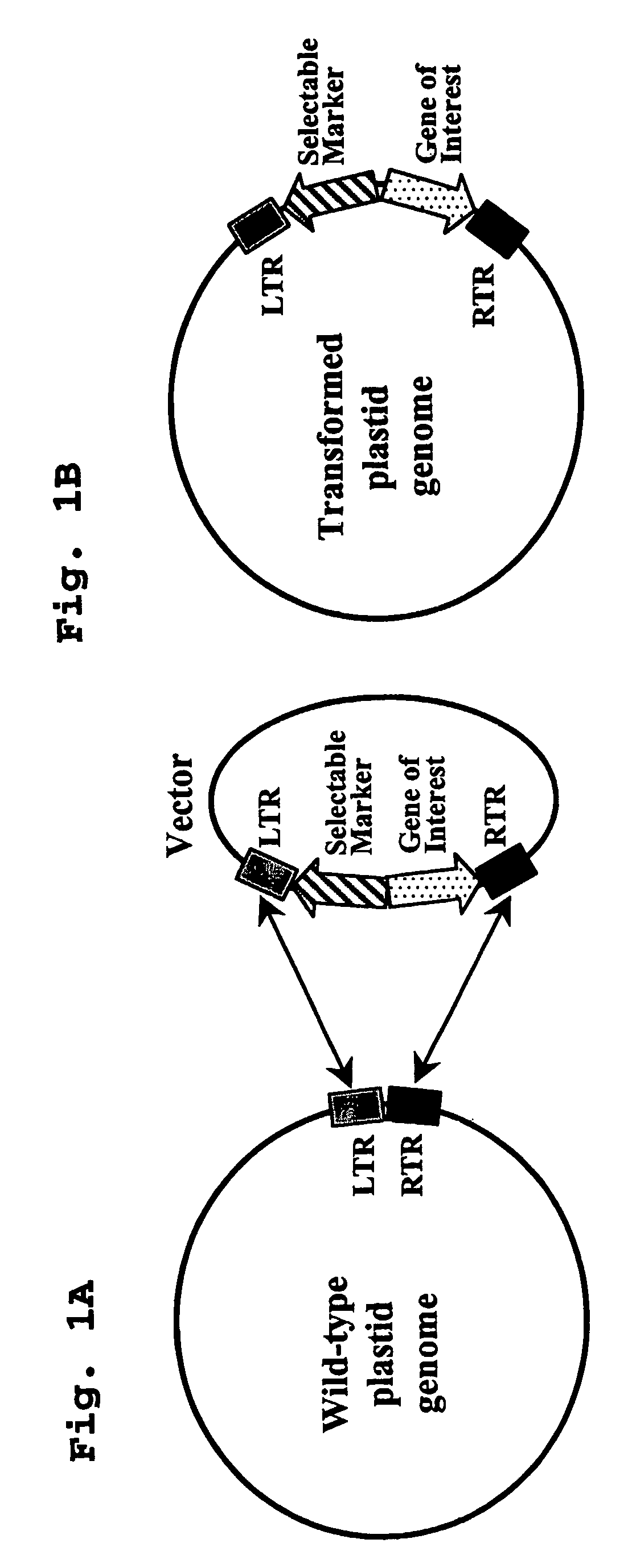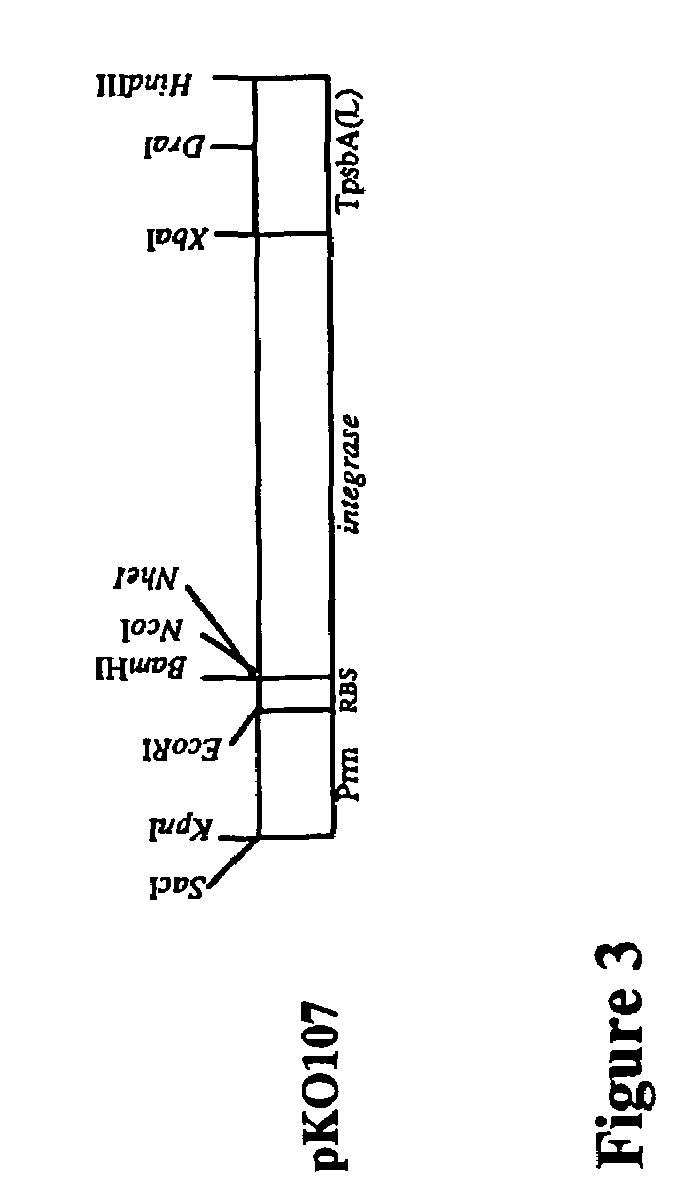Transgenic plants having transformed plastid genomes and progeny thereof
a technology of plastid genome and transgenic plants, which is applied in the field of molecular biology and transgenic plants, can solve the problems of inefficient plastid transformation in these new species
- Summary
- Abstract
- Description
- Claims
- Application Information
AI Technical Summary
Benefits of technology
Problems solved by technology
Method used
Image
Examples
example 1
Transient INT Expression in Plastids for Site-specific Integration of Foreign DNA
[0070]There are three components of the transient INT system: 1) a transplastomic recipient line carrying an attB sequence 2) an INT encoding vector for transient expression in plastids and 3) a donor vector for integration which contains an attP sequence, a marker gene and a gene of interest (goi).
[0071]The following materials and methods are provided to facilitate the practice of Example 1.
Plastid Vector for the Introduction of an attB Sequence into the Plastid Genome
[0072]A plastid transformation vector has been designed that contains an attB sequence and an addA gene that is flanked by two directly oriented lox sites (pSAC114; FIG. 2). The KpnI-SacI region of pSAC114 (Seq. ID. No.4) was assembled in plasmid pSAC113, a pBluescript derivative. Starting from the left, the lox site located downstream of the Tpsba(L) terminator is contained in a KpnI-Bg1II fragment (SEQ ID NO:2). The fragment was obtaine...
example 2
Site-specific Integration of Foreign DNA by a Plastid Encoded Integrase
[0084]In Example 2, we describe a method for integration of the donor vector by INT expressed from a gene stably integrated in the plastid genome. Stable plastid expression of int may yield higher levels of INT resulting in an increase in integration efficiency as compared to transiently expressed INT, which was described in Example 1. Example 2 describes two systems for stable expression of the plastid int gene yielding the same result, a gene of interest, one lox site and attR sequence incorporated in the plastid genome. The two systems differ with respect to the number of marker genes required (System 2A requires one, whereas 2B requires two marker genes) and flexibility to choose the promoter for the expression of gene of interest (2A, no flexibility; 2B, flexible).
[0085]System 2A calls for a recipient with a plastid-encoded integrase flanked by a lox site and an attB sequence (FIG. 13B). The recipient may be...
example 3
Site-specific Integration of Foreign DNA into the Plastid Genome Facilitated by a Nuclear-encoded Plastid Targeted int
[0088]The following materials and methods are provided to facilitate the practice of Example 3.
Plastid Targeted N-int Linked to a Nuclear Gentamycin Resistance Gene
[0089]The N-int gene in Agrobacterium vector pKO117 encodes INT with its N terminus translationally fused with the pea Rubisco small subunit (SSU) chloroplast transit peptide (Timko et al. 1985) and twenty-two amino acids of the mature Rubisco small subunit. The int coding region is contained in an NcoI-XbaI fragment (SEQ ID NO: 5). Plasmid pKO117 was obtained by replacing the cre coding region with the int coding region in plasmid pKO30 (WO01 / 21768). The map of Agrobacterium transformation vector pKO117 is shown in FIG. 15.
[0090]To obtain suitable recipients, transformation of Nt-pSAC114 transplastomic lines (Example 1) was carried out with Agrobacterium vector pKO117. Transformation and tobacco plant re...
PUM
| Property | Measurement | Unit |
|---|---|---|
| size | aaaaa | aaaaa |
| herbicide resistance | aaaaa | aaaaa |
| compositions | aaaaa | aaaaa |
Abstract
Description
Claims
Application Information
 Login to View More
Login to View More - R&D
- Intellectual Property
- Life Sciences
- Materials
- Tech Scout
- Unparalleled Data Quality
- Higher Quality Content
- 60% Fewer Hallucinations
Browse by: Latest US Patents, China's latest patents, Technical Efficacy Thesaurus, Application Domain, Technology Topic, Popular Technical Reports.
© 2025 PatSnap. All rights reserved.Legal|Privacy policy|Modern Slavery Act Transparency Statement|Sitemap|About US| Contact US: help@patsnap.com



